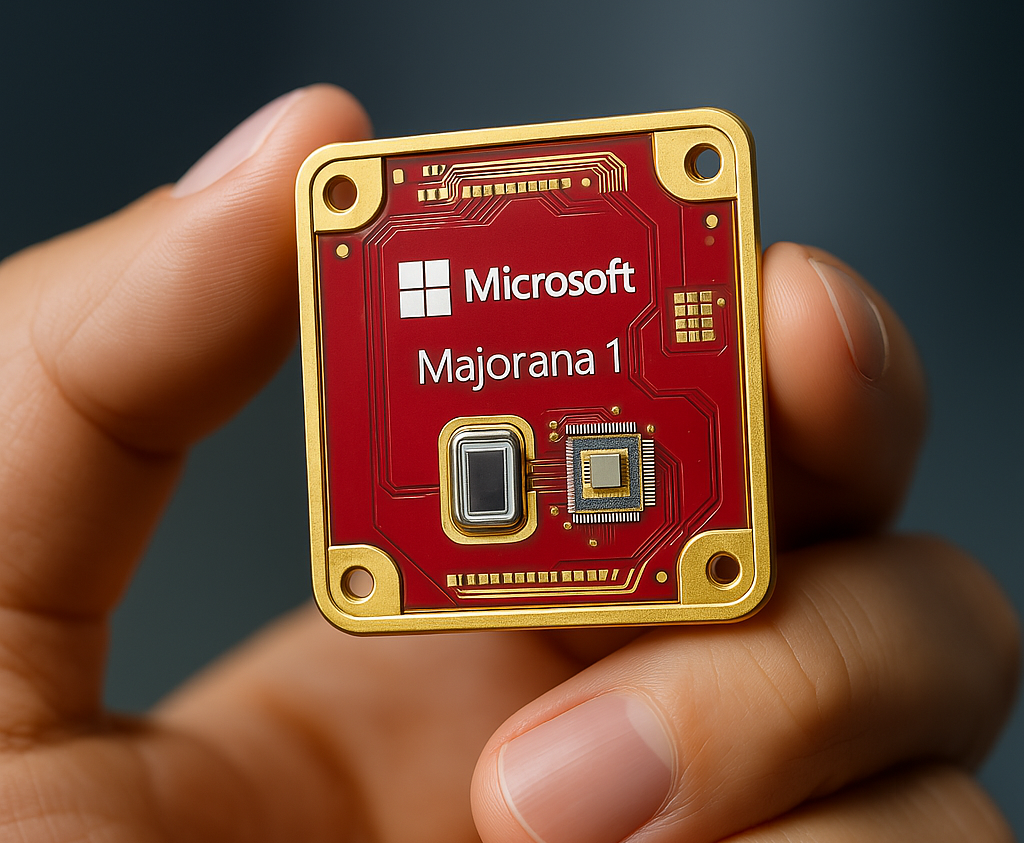Microsoft’s Majorana 1 is a groundbreaking quantum processor that leverages a novel Topological Core architecture to enhance the stability and scalability of qubits—the fundamental units of quantum information(In commercial computers, that unit is bits).
This innovation aims to accelerate the realization of practical quantum computing solutions capable of addressing complex, real-world problems.
This new technology will help us to solve calculations within the limited time frame that classical computers take decades.
WHAT MAKES MICROSOFT’S MAJORANA 1 DIFFERENT
- Topological Qubits: Utilizing a new class of materials called topoconductors, which leverage quantum mechanical effects, allowing for dissipationless or highly efficient charge transport.
- Majorana 1 can observe and control Majorana particles (or Majorana particles are fermion that is their own antiparticle). These particles facilitate the creation of topological qubits, which are inherently more stable and less prone to errors than traditional qubits.
- Scalability: The Topological Core architecture is designed to support up to one million qubits on a single chip, significantly surpassing the capabilities of existing quantum processors.
- This scalability is crucial for performing complex computations currently beyond classical computers’ reach.
This advancement positions Microsoft at the forefront of quantum computing research, with the potential to revolutionize industries by solving problems that are currently intractable for classical computers.
HOW MICROSOFT’S MAJORANA 1 WORKS
-
Material Science Breakthrough: Microsoft created a new material called a topoconductor, which enables the formation and control of Majorana particles on a chip.
-
Topological Qubits: Unlike traditional qubits that are sensitive to environmental interference, topological qubits are “braided” in a way that makes their quantum state more robust and error-resistant.
-
Quantum Stability: This drastically reduces the number of error-correcting qubits needed, paving the way for scalable quantum systems.
COMPARISON WITH TRADITIONAL COMPUTERS & SUPERCOMPUTERS

| Feature | Traditional Computers 🖥️ | Supercomputers 🚀 | Majorana 1 Quantum Chip ⚛️ |
|---|---|---|---|
| Core Technology | Binary bits (0 or 1) | Multi-core CPUs/GPUs | Qubits (superposition + entanglement) |
| Speed | MHz to GHz | Teraflops to Petaflops | Potential for exponential speed-up |
| Parallelism | Limited by CPU/GPU cores | High (massive parallel clusters) | Quantum parallelism (theoretical advantage) |
| Error Handling | Software + Hardware redundancy | Advanced software/hardware layers | Topological error resistance (built-in) |
| Problem-Solving Focus | Everyday tasks, apps | Complex simulations, AI, weather | Quantum chemistry, cryptography, optimization |
| Current Readiness | Fully operational | Fully operational | Early-stage, under research/testing |




